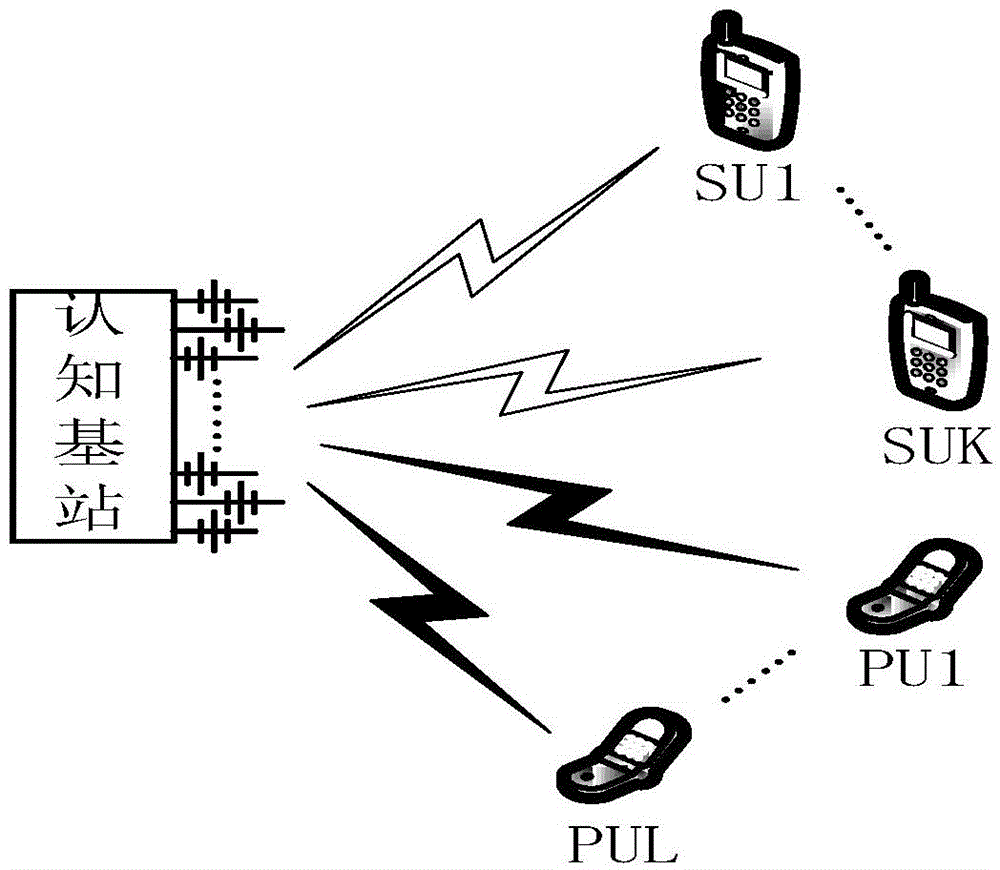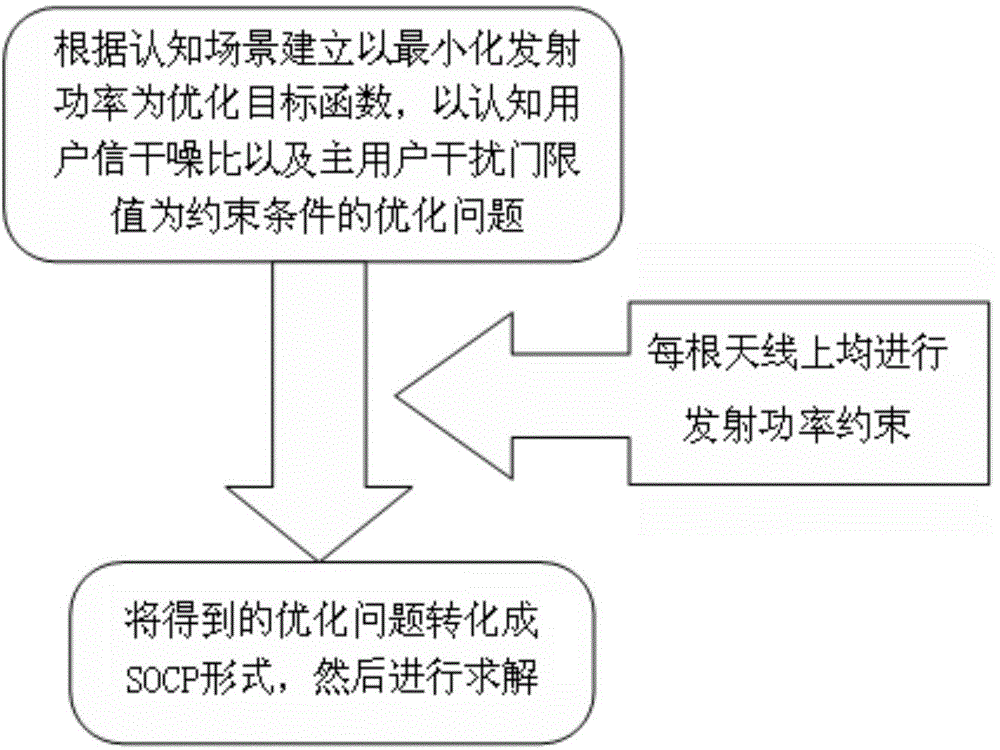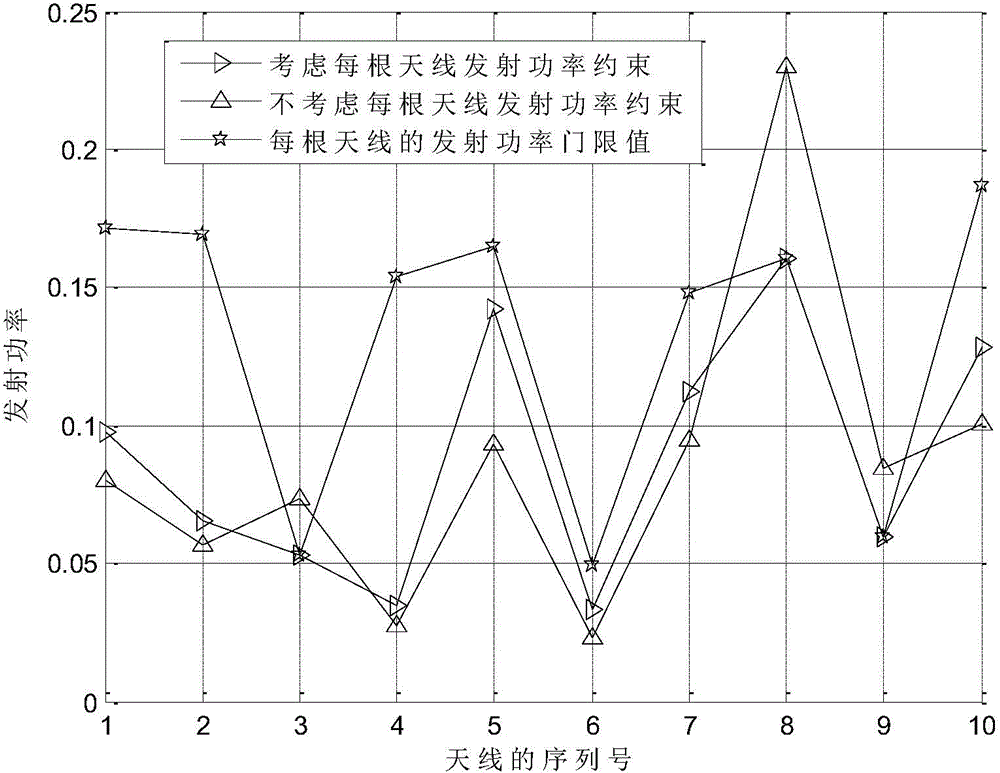A power distribution method for cognitive system constrained based on transmitting antenna power
A cognitive system and transmitting antenna technology, applied in power management, wireless communication, electrical components, etc., can solve problems such as not considering antenna transmitting power
- Summary
- Abstract
- Description
- Claims
- Application Information
AI Technical Summary
Problems solved by technology
Method used
Image
Examples
Embodiment Construction
[0029] Further set forth the present invention below in conjunction with accompanying drawing:
[0030] figure 1 It is a system model diagram of the present invention. Consider a cognitive wireless communication system, which includes a cognitive base station with M antennas, K cognitive users with a single antenna, and L primary users with a single antenna. PU (Primary User) and SU (Secondary User) represent primary users and cognitive users, respectively. The signal received by the kth cognitive user can be expressed as:
[0031] y k s = Σ i = 1 K h k t i u i + n k
[0032] Among them, k=1...K, where u k Represents the signal sent by the cognitive base station to the kt...
PUM
 Login to View More
Login to View More Abstract
Description
Claims
Application Information
 Login to View More
Login to View More - R&D
- Intellectual Property
- Life Sciences
- Materials
- Tech Scout
- Unparalleled Data Quality
- Higher Quality Content
- 60% Fewer Hallucinations
Browse by: Latest US Patents, China's latest patents, Technical Efficacy Thesaurus, Application Domain, Technology Topic, Popular Technical Reports.
© 2025 PatSnap. All rights reserved.Legal|Privacy policy|Modern Slavery Act Transparency Statement|Sitemap|About US| Contact US: help@patsnap.com



